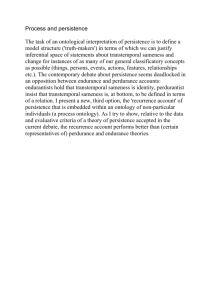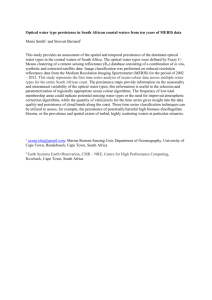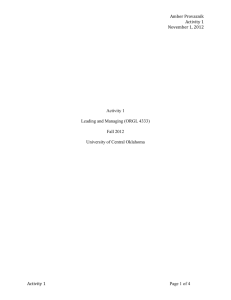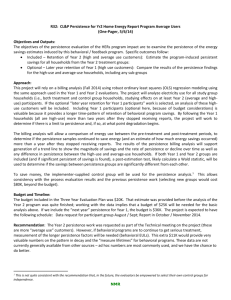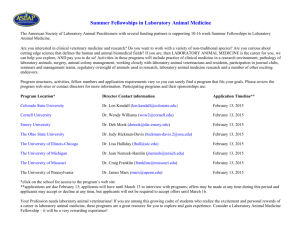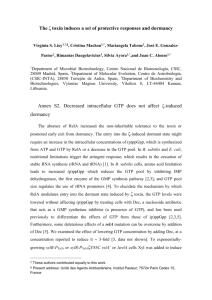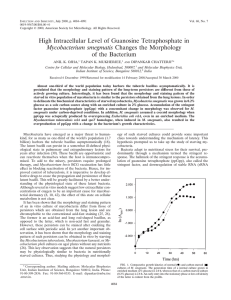Persistence - WordPress.com
advertisement
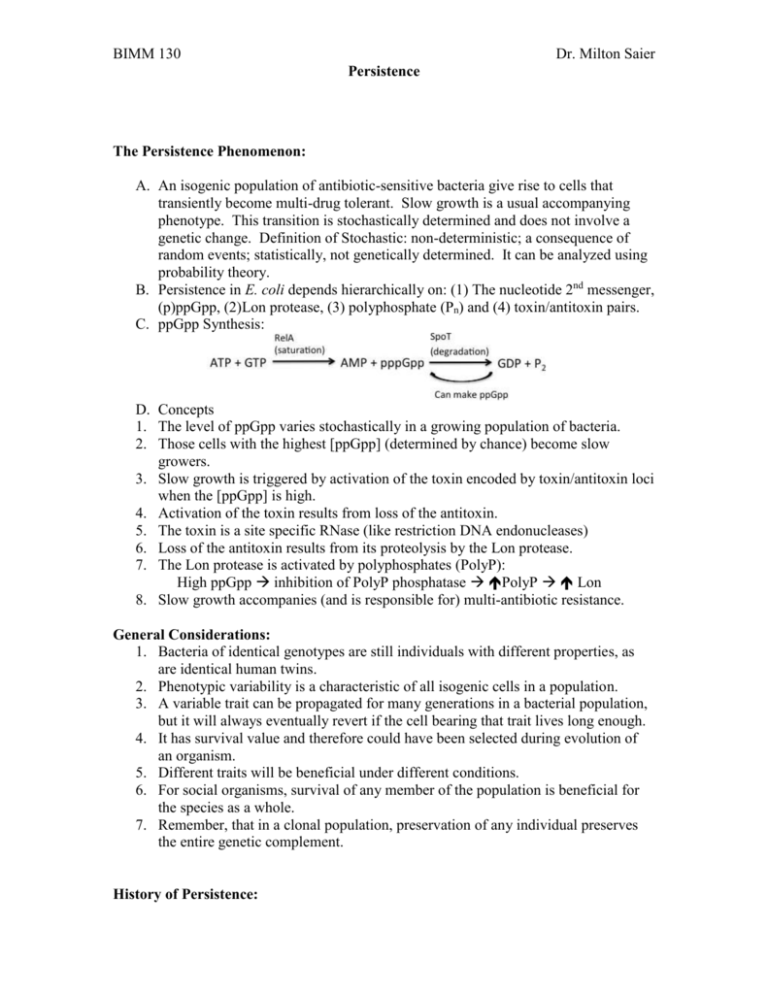
BIMM 130 Dr. Milton Saier Persistence The Persistence Phenomenon: A. An isogenic population of antibiotic-sensitive bacteria give rise to cells that transiently become multi-drug tolerant. Slow growth is a usual accompanying phenotype. This transition is stochastically determined and does not involve a genetic change. Definition of Stochastic: non-deterministic; a consequence of random events; statistically, not genetically determined. It can be analyzed using probability theory. B. Persistence in E. coli depends hierarchically on: (1) The nucleotide 2nd messenger, (p)ppGpp, (2)Lon protease, (3) polyphosphate (Pn) and (4) toxin/antitoxin pairs. C. ppGpp Synthesis: D. Concepts 1. The level of ppGpp varies stochastically in a growing population of bacteria. 2. Those cells with the highest [ppGpp] (determined by chance) become slow growers. 3. Slow growth is triggered by activation of the toxin encoded by toxin/antitoxin loci when the [ppGpp] is high. 4. Activation of the toxin results from loss of the antitoxin. 5. The toxin is a site specific RNase (like restriction DNA endonucleases) 6. Loss of the antitoxin results from its proteolysis by the Lon protease. 7. The Lon protease is activated by polyphosphates (PolyP): High ppGpp inhibition of PolyP phosphatase PolyP Lon 8. Slow growth accompanies (and is responsible for) multi-antibiotic resistance. General Considerations: 1. Bacteria of identical genotypes are still individuals with different properties, as are identical human twins. 2. Phenotypic variability is a characteristic of all isogenic cells in a population. 3. A variable trait can be propagated for many generations in a bacterial population, but it will always eventually revert if the cell bearing that trait lives long enough. 4. It has survival value and therefore could have been selected during evolution of an organism. 5. Different traits will be beneficial under different conditions. 6. For social organisms, survival of any member of the population is beneficial for the species as a whole. 7. Remember, that in a clonal population, preservation of any individual preserves the entire genetic complement. History of Persistence: BIMM 130 Dr. Milton Saier Persistence Joseph Bigger (1944) discovered persistence while studying penicillin killing. Alexander Fleming (1928) discovered penicillin accidently while studying a contaminated sample of the mold, Penicillium. It and its derivatives are still the most widely used antibiotics in medicine today. Persister cells, when regrown and subjected to the same procedure show the same behavior. Persistence has been observed in many bacterial phyla and almost all pathogens. It is a general phenomenon, common to all tested bacteria and typically occurs in dormant, reoccurring, and chronic infections. Many genes influence the frequency of persistence (the percent of a population that becomes persistent). High persister mutants (hip) include hipA, a “toxin” gene in a toxin-antitoxin (T-AT) system called HipBA encoded by the hipBA operon. HipA, the toxin, is bacteriostatic but does not kill the cell. A, the toxin, is always stable; B, the antitoxin is unstable due to proteolysis. hipB always precedes hipA; HipB is made in greater amounts than HipA, and the two genes are translationally coupled, so the ratio of hipB expression to hipA expression is always equal. HipB (or HipAB) regulates (represses) operon transcription. When HipB is degraded sufficiently by the Lon protease, the toxin is activated, causing persistence. There are at least 10 T/AT gene pairs in E. coli that encode mRNA endonucleases (RNases). Deletion of some persistence; deletion of all loss of persistence. Lon degrades all of these ATs. Loss of Lon little or no persistence. Lon persistence if the T/AT loci are present, but not if absent. Summary: 1. ppGpp activates T/AT loci. 2. This involves polyP and Lon. 3. Stochastic induction is due to fluctuations in [ppGpp] in single cells. How??? 4. ppGpp inhibits exopolyphosphatase (PPX). 5. PolyP is constitutively made by a polyP kinase (PPK). ppGpp PolyPhosphatase PolyP 6. PolyP binds Lon and increases its activity. 7. Lon degrades the eleven ATs of E. coli K12. 8. The toxins (RNases) are activated. 9. mRNA cleavage inhibits translation (Tl). 10. Tl inhibition inhibits growth. 11. T>AT de-repression of the T/AT operon, with Tx & Tl. 12. De-repression AT T activity. 13. If [ppGpp] is low cells revive and grow.

